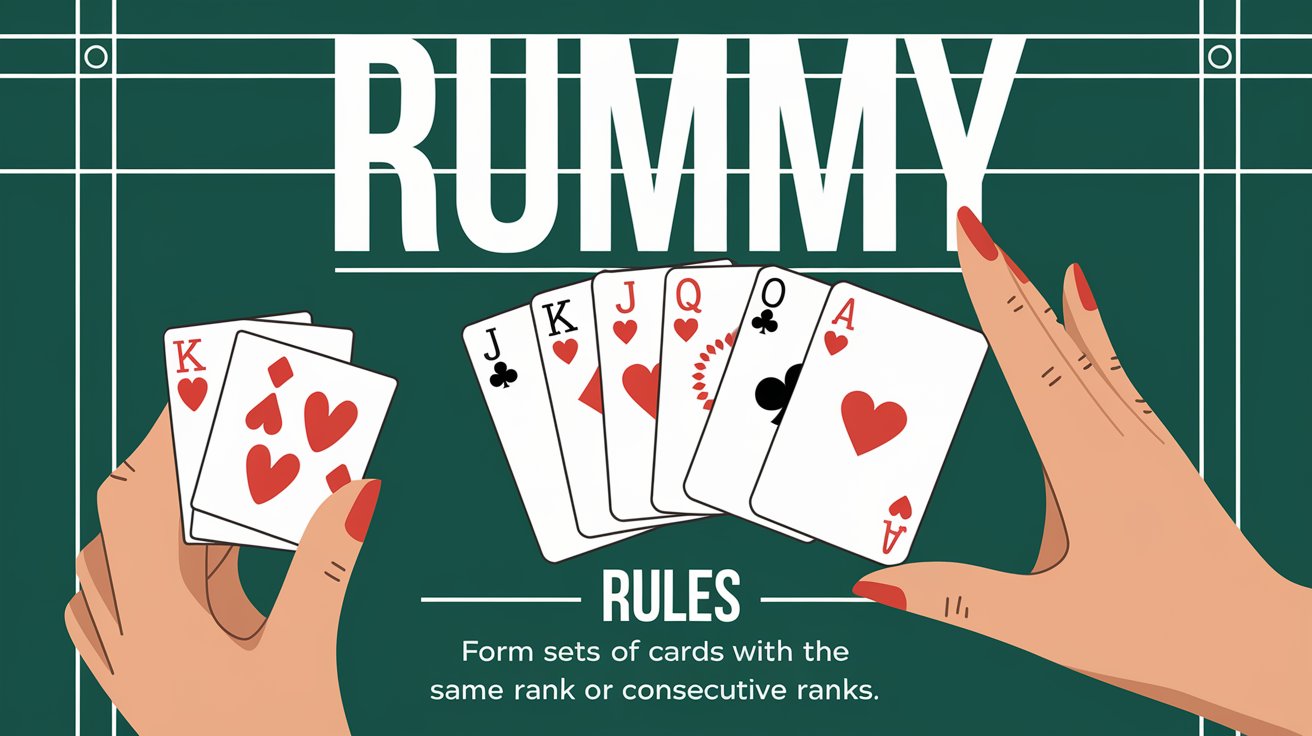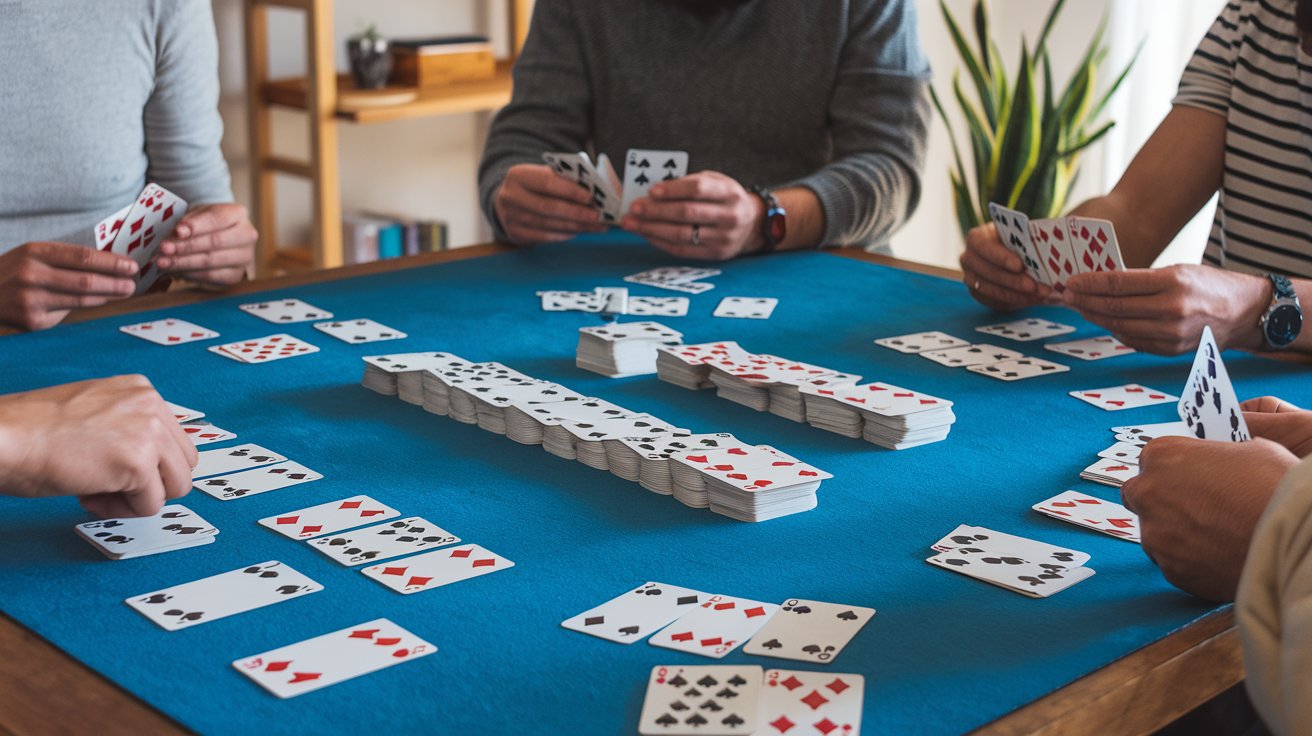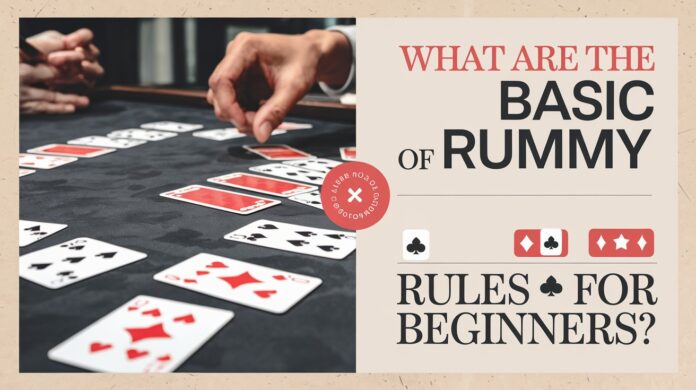Rummy is one of the world’s most beloved card games, cherished for its perfect blend of strategy, skill, and just enough luck to keep things interesting. If you’ve always wanted to learn how to play but felt intimidated by complex rules or experienced players, you’re in the right place. This comprehensive guide breaks down everything beginners need to know about the basic rules of Rummy in simple, easy-to-understand terms.
Whether you’re preparing for a family game night, looking for a new activity to enjoy with friends, or simply want to expand your card game knowledge, mastering Rummy is a rewarding endeavor. The beauty of this classic game lies in its accessibility—the fundamentals are straightforward enough to learn in one sitting, yet the strategic depth can keep you engaged for a lifetime.
What Exactly Is Rummy?

Before diving into the rules, let’s understand what Rummy actually is. Rather than a single game, Rummy refers to a family of card games characterized by similar gameplay mechanics. The core concept involves players drawing and discarding cards with the goal of forming specific combinations and being the first to use all the cards in their hand.
The most basic version—often called “Straight Rummy” or “Basic Rummy”—is what we’ll focus on in this guide. Once you’ve mastered these fundamentals, you’ll have the foundation needed to explore popular variations like Gin Rummy, Oklahoma Rummy, or Canasta.
What You’ll Need to Play Rummy
Getting started with Rummy requires minimal equipment, making it perfect for impromptu game sessions. Here’s what you’ll need:
- A standard deck of playing cards: One 52-card deck is sufficient for 2-4 players. For larger groups or certain variations, you might use two decks.
- Players: Rummy works well with 2-6 players, though the sweet spot is typically 3-4 for balanced gameplay.
- Paper and pencil: For keeping score across multiple rounds.
- A flat playing surface: Any table or stable surface large enough to accommodate the card layout.
Basic Objective of Rummy
The primary goal in Rummy is straightforward: be the first player to form all the cards in your hand into valid combinations (called “melds”) and “go out.” Players who don’t manage to go out will receive penalty points based on the cards remaining in their hands at the end of each round.
Since lower scores are better in most Rummy variations, the overall objective is to minimize your point total across multiple rounds of play.
Understanding Card Values in Rummy

Before we get into the gameplay, it’s important to understand how cards are valued in Rummy, as this affects both strategy and scoring:
- Face cards (King, Queen, Jack): 10 points each
- Aces: 1 point (in most variations)
- Number cards (2-10): Worth their face value (e.g., 7 of hearts = 7 points)
These point values represent penalties for cards left in your hand when another player goes out, so generally, you want to avoid holding onto high-value cards for too long.
The Deal: How to Start a Game of Rummy
Now that you understand the basics, here’s how to begin play:
- Choose a dealer: This can be done randomly for the first game. In subsequent games, the winner of the previous round typically deals.
- Shuffle and cut: The dealer thoroughly shuffles the deck and offers it to the player on their right to cut.
- Deal the cards: Starting with the player to their left and moving clockwise, the dealer distributes cards one at a time until each player has:
- 7 cards each for 3-4 players
- 10 cards each for 2 players
- 6 cards each for 5 or more players
- Form the stock and discard piles: After dealing, place the remaining cards face-down in the center to form the “stock” or “draw” pile. Turn the top card face-up beside it to start the “discard” pile.
Valid Card Combinations in Rummy
The heart of Rummy strategy revolves around forming valid combinations of cards. There are two types of combinations you can create:
1. Sets (also called “groups” or “books”)
A set consists of three or four cards of the same rank but different suits.
Examples:
- 5♠, 5♦, 5♣ (three 5s of different suits)
- J♠, J♥, J♦, J♣ (all four Jacks)
Invalid sets:
- 5♠, 5♦, 6♣ (different ranks)
- 5♠, 5♠, 5♦ (duplicate suits)
- 5♠, 5♦ (only two cards)
2. Runs (also called “sequences”)
A run consists of three or more consecutive cards of the same suit.
Examples:
- 3♥, 4♥, 5♥ (three consecutive hearts)
- 9♣, 10♣, J♣, Q♣ (four consecutive clubs)
Invalid runs:
- 3♥, 4♦, 5♥ (mixed suits)
- 3♥, 5♥, 6♥ (not consecutive)
- J♠, Q♥, K♠ (mixed suits)
Important note about Aces: Aces can be used as either high or low cards in runs, but not both simultaneously. This means A-2-3 is a valid run, as is J-Q-K-A, but K-A-2 is not valid because it uses the Ace as both high and low.
Basic Gameplay: Taking Your Turn

Once the cards are dealt and the stock and discard piles are established, gameplay proceeds clockwise from the dealer. Here’s what happens on each player’s turn:
1. Draw a Card
Start your turn by drawing one card from either:
- The face-down stock pile (if you prefer an unknown card)
- The face-up discard pile (if you want the card that was most recently discarded)
2. Form Combinations
After drawing, you may arrange the cards in your hand into valid sets and runs. At this stage, the combinations remain in your hand—you don’t place them on the table until you’re ready to go out (in basic Rummy).
3. Discard a Card
End your turn by discarding one card face-up onto the discard pile. Choose wisely, as this card becomes available for the next player to pick up if they desire.
Special Note: First Turn Exception
In some variations, the first player has the option to pick up the initial face-up card instead of drawing from the stock pile. If they decline, the next player may choose to take it or draw from the stock pile.
Going Out: How to Win a Round
The goal of each round is to “go out” before your opponents. Here’s how this works:
- Form all cards in your hand into valid combinations (sets and runs).
- Discard your final card face-down onto the discard pile. This completes your turn and ends the round.
In some house rules, you may be required to have at least one discard at the end (meaning you can’t just lay down all your cards at once), but this varies by region and group preference.
Scoring in Basic Rummy
After a player goes out, scoring takes place as follows:
- The winner scores zero for that round.
- Other players count the point value of all cards remaining in their hands, based on the card values mentioned earlier.
- Record these points as each player’s score for the round. Remember that in most Rummy variations, the goal is to have the lowest score.
- Continue playing rounds until someone reaches a predetermined limit (often 100 or 150 points), at which point the player with the lowest total score wins the game.
Common Variations in Basic Rules
While the rules outlined above form the foundation of basic Rummy, many groups play with slight variations. Here are some common alternatives you might encounter:
Laying Off
In some variations, players can “lay off” cards on combinations that have already been melded by other players. For example, if a player has placed the set 5♠, 5♦, 5♣ on the table, another player holding the 5♥ could add it to that set on their turn.
Going Rummy
Some play with a rule called “going Rummy,” where a player who goes out in a single turn (without having previously laid down any combinations) earns a bonus or causes opponents to score double points.
Picking Up the Discard Pile
In certain variations, players can sometimes pick up the entire discard pile rather than just the top card, usually under specific conditions.
Knocking
Some versions allow players to “knock” (end the round) when the value of unmatched cards in their hand falls below a certain threshold, rather than requiring them to go out completely.
Before playing with a new group, it’s always a good idea to clarify which of these variations, if any, they use.
Essential Strategies for Rummy Beginners
Now that you understand the rules, here are some basic strategies to improve your chances of winning:
1. Organize Your Hand Effectively
Keep your hand organized by suit and sequence to more easily spot potential combinations. Many players arrange their cards with potential runs on one side and potential sets on the other.
2. Be Strategic About Discards
Avoid discarding cards that could help your opponents. Pay attention to what others pick up from the discard pile to gauge what combinations they might be working on.
3. Prioritize Getting Rid of High-Value Cards
Since remaining cards count against you, try to use high-value cards (face cards and 10s) in combinations early or discard them if they don’t fit into your strategy.
4. Stay Flexible in Your Approach
Don’t commit too rigidly to specific combinations early in the game. Keep your options open and be ready to change your strategy based on the cards you draw.
5. Watch the Discard Pile Carefully
The discard pile provides valuable information about what other players are trying to collect. Use this intelligence to your advantage when deciding what to discard.
6. Consider the Risk vs. Reward of Drawing
Drawing from the stock pile is a risk but might yield exactly what you need. Drawing from the discard pile is safer but reveals information to other players about what you’re collecting.
Common Beginner Mistakes to Avoid
As you learn Rummy, be aware of these common pitfalls:
1. Holding Onto Cards Too Long
New players often hold onto cards hoping to form the “perfect” combination. This is risky—if another player goes out, you’ll be stuck with high-point cards.
2. Ignoring Opponent Discards
Failing to pay attention to what others discard and pick up means missing crucial information about their strategy.
3. Inflexible Strategy
Sticking with your initial plan despite drawing cards that suggest a different approach can lead to suboptimal play.
4. Discarding Cards That Help Opponents
Without careful observation, you might discard exactly what another player needs to complete their hand.
5. Focusing Only on Going Out Quickly
Sometimes it’s better to wait for a more favorable hand than to rush to go out with minimal combinations, especially in multiple-round games.
Rummy Etiquette for Beginners
Good sportsmanship enhances everyone’s enjoyment. Here are some etiquette guidelines for Rummy newcomers:
- Take a reasonable amount of time for your turns without rushing or delaying unnecessarily.
- Avoid showing your cards to other players (intentionally or accidentally).
- Don’t comment on others’ plays or give unsolicited advice during the game.
- Handle cards respectfully to prevent damage or marking.
- Be a gracious winner or loser, regardless of the outcome.
Taking Your Rummy Skills Further
Once you’ve mastered the basics of Rummy, you might want to explore these popular variations:
- Gin Rummy: A two-player variation with a focus on minimizing “deadwood” (unmatched cards).
- Liverpool Rummy: Played over multiple rounds with specific required combinations for each round.
- Canasta: A more complex variation played with multiple decks and focused on creating seven-card sets called “canastas.”
- Indian Rummy: Also known as Paplu, this variation uses two decks and jokers as wild cards.
- Continental Rummy: A multi-round game with specific requirements for each round, similar to Liverpool Rummy.
Conclusion: Enjoying the Journey of Learning Rummy
Learning Rummy is a rewarding experience that combines social interaction with strategic thinking. The basic rules outlined in this guide provide everything you need to start playing confidently, but remember that mastery comes with practice.
Don’t be discouraged if your first few games don’t go as planned—each hand you play will improve your understanding of strategy and card management. Over time, you’ll develop your own style and approach to the game.
The most important aspect of Rummy—and indeed any card game—is enjoyment. Whether playing with family members who have enjoyed the game for generations or introducing it to friends who have never played before, Rummy offers a delightful combination of accessibility and depth that has made it a beloved pastime around the world for centuries.
So gather your cards, find some willing players, and start dealing! The world of Rummy awaits, and with these fundamentals under your belt, you’re well equipped to join the millions who have found joy in this classic card game.
Happy playing, and may your combinations always come together perfectly!

Zareb Saleh is a journalist at Gulf Today and a ghostwriter for Gameoholic, specializing in gaming, technology, and digital culture. With a keen eye for industry trends, he delivers insightful stories that engage and inform readers.




